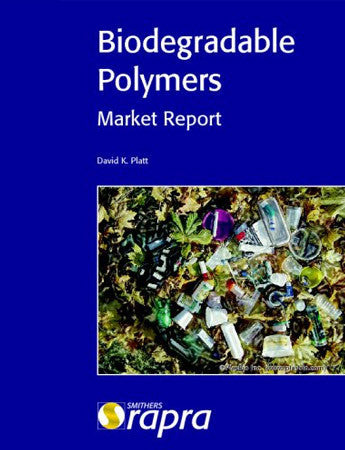Biodegradable Polymers
Biodegradable polymers have experienced strong growth over the last three years and are set to make further inroads into markets traditionally dominated by conventional thermoplastics in future.
Demand is being driven by a number of factors.
The cost of biodegradable polymers has come down considerably over the last three years while at the same time standard thermoplastic prices have increased considerably. Now, some classes of biodegradable polymers are price competitive with polymers such as PET.
The biodegradable polymers industry itself has established an agreed framework for testing and certification and there is growing political pressure in developed countries to reduce packaging waste and develop a composting infrastructure. Biodegradable polymer producers have also invested in product and process improvements. Finally, consumers and brand owners are beginning to recognize the benefits of sustainable or ‘green’ packaging.
Four main classes of biodegradable polymers are analyzed in this report, polylactic acid (PLA), starch-based polymers, synthetic biodegradable polymers, such as aromatic aliphatic co-polyesters, and polyhydroxyalkanoates (PHA). The report analyses their key performance properties, applications development, market drivers and future prospects. Each product section also contains an estimate of market size by world region and end use market, plus forecasts to 2010. There is also an analysis of key suppliers and their products.
Key Features
Biodegradable polymers market size by geographic region, polymer type and end use sector, 2000 and 2005, plus forecasts to 2010. Market opportunity analysis by end use sector, such as packaging, bags and sacks, foodservice, agriculture, medical, consumer products and fibres. Illustrations of product and applications development over the last three years. Supply chain analysis: including details of thirty leading biodegradable polymer suppliers and profiles of around fifty of the world’s leading biodegradable polymer processors. Analysis of biodegradable polymer performance properties, market drivers, applications and product developments.
Demand is being driven by a number of factors.
The cost of biodegradable polymers has come down considerably over the last three years while at the same time standard thermoplastic prices have increased considerably. Now, some classes of biodegradable polymers are price competitive with polymers such as PET.
The biodegradable polymers industry itself has established an agreed framework for testing and certification and there is growing political pressure in developed countries to reduce packaging waste and develop a composting infrastructure. Biodegradable polymer producers have also invested in product and process improvements. Finally, consumers and brand owners are beginning to recognize the benefits of sustainable or ‘green’ packaging.
Four main classes of biodegradable polymers are analyzed in this report, polylactic acid (PLA), starch-based polymers, synthetic biodegradable polymers, such as aromatic aliphatic co-polyesters, and polyhydroxyalkanoates (PHA). The report analyses their key performance properties, applications development, market drivers and future prospects. Each product section also contains an estimate of market size by world region and end use market, plus forecasts to 2010. There is also an analysis of key suppliers and their products.
Key Features
Biodegradable polymers market size by geographic region, polymer type and end use sector, 2000 and 2005, plus forecasts to 2010. Market opportunity analysis by end use sector, such as packaging, bags and sacks, foodservice, agriculture, medical, consumer products and fibres. Illustrations of product and applications development over the last three years. Supply chain analysis: including details of thirty leading biodegradable polymer suppliers and profiles of around fifty of the world’s leading biodegradable polymer processors. Analysis of biodegradable polymer performance properties, market drivers, applications and product developments.
David Platt graduated from the University of Nottingham with an Economics degree before completing an MBA at the University of Bradford. He joined a leading international market consultancy where he specialized in plastics sector research. He conducted a wide range of multi-client and single-client studies covering a wide range of materials, from standard thermoplastics, engineering and high performance polymers to conductive polymers and thermoplastic elastomers. Now operating as a freelance consultant, he makes regular contributions to the European plastics trade press, and works with leading plastics industry consultants.




